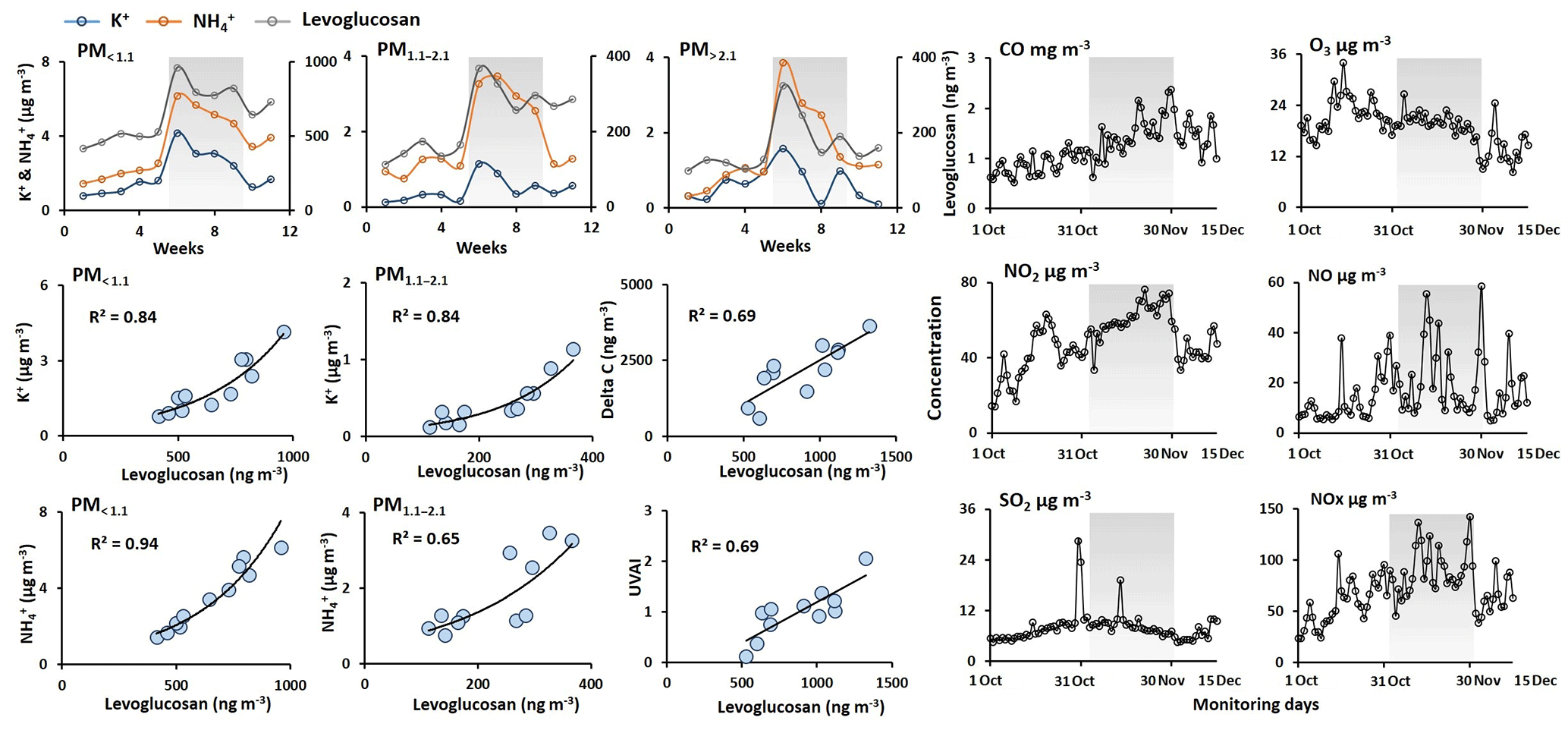
This means that measurements made on aerosol from all phases of combustion gathered into a single chamber may incorrectly estimate CCN properties. When externally-mixed, accumulation-mode particles are emitted in the absence of SVOCs, CCN can be overestimated by up to a factor of two. Co-emitted, semi-volatile organic compounds or emission at small particle sizes can homogenize composition before plume exit, and SVOC co-emission can be the main factor determining plume-exit CCN for hydrophobic or small particles. Coagulation limits emission of CCN to about 1016 per kg of fuel. The PartMC model was used to evaluate plume dynamics affecting CCN activity of biomass burning aerosols early in a plume. The updated PartMC-MOSAIC model was able to simulate gas and aerosol concentrations from the CARES campaign at levels similar to observations. We implemented the “volatility basis set” (VBS) framework in the model.

It was calibrated against chamber results, and we needed to account for the non-spherical structure of particle agglomerates, even for ammonium sulfate. The particle-resolved model PartMC was enhanced to include additional physical processes. Therefore, reactions with NH 3 form compounds that absorb more light than the original aerosol and act as surfactants, increasing the likelihood that these particles will participate in cloud formation. Aging by NH 3 produces a mild increase in the hygroscopicity of BrC, and a greater increase in cloud condensation nucleus activity. We confirmed that a significant change occurred in the aerosol phase, by measuring absorption by suspended particles after aging with NH 3 and finding doubled aerosol absorption. Absorption increased more at visible wavelengths. Absorption increased, but by only small amounts for all of these treatments, with one exception: after aging with ammonia, absorption increased by almost a factor of four. We captured aerosol emitted from biomass pyrolysis on filters and exposed it to ultraviolet radiation, to the atmospheric trace more » gases ozone, ammonia (NH 3) and nitrogen oxide and to aqueous saturated salt solutions of ammonium sulfate, ammonium nitrate, sodium chloride and sodium sulfate. We suggest that pyrolysis products can be considered surrogates for a wide range of biomass aerosol. For both sources, the greatest light absorption occurred at the highest generation temperature, and this maximum absorption was very similar to that of wood-generated aerosol. We measured absorption by aerosol from biomass pyrolysis from two sources with very different composition: wood and corn stalk. The focus in this project was on aerosol from biomass pyrolysis, abbreviated BrC (“brown carbon”).

This project used laboratory measurements of fresh and aged carbonaceous aerosol, and predictions of properties using a particle-resolved model, to identify sensitivities. It also controls particles’ activation into cloud droplets, which in turn affects cloud albedo and particle removal. Hygroscopicity is a measure of water affinity, which governs particle growth at humid conditions and absorption and scattering under those conditions. These climate-relevant properties included light absorption and hygroscopicity. The goal of this project was to evaluate climate-relevant properties of carbonaceous particles and the transformations of those particles in the atmosphere, with the purpose of developing lumped classes of carbonaceous particles suitable for use in large-scale models.


 0 kommentar(er)
0 kommentar(er)
